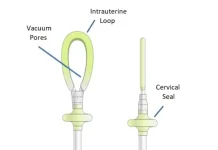Vexev and U.S. Renal Care announced successful results from the CANSCAN trial of the VxWave robotic ultrasound imaging system. Sydney, Australia-based Vexev develops the VxWave ultrasound imaging system for arteriovenous (AV) fistula mapping in dialysis clinics.
The company designed the robotic tomographic ultrasound system, specifically for upper limb vascular imaging. It integrates advanced robotics, machine learning and ultrasound signal processing. This combination creates a 3D vascular model and detailed report to deliver insights into vascular access points at the point of care.
Related: Hyperion completes first-in-human study of Ivy robotic vascular access platform
Vexev says the study demonstrated that VxWave can reliably perform semi-autonomous vascular mapping examinations directly within the dialysis clinic. Dr. Varshi Broumand, the study’s principal investigator, presented findings at the American Society of Nephrology’s annual meeting, Kidney Week 2025, in Houston.
“Functioning vascular access is a lifeline for patients on hemodialysis, yet nearly 3 out of 4 arteriovenous fistulas (AVF) fail to mature or are abandoned before use. While traditional vascular mapping scans have improved vascular access, they suffer from poor patient compliance due to being scheduled outside of dialysis appointments, often lack standardized quality and are expensive,” said Dr. Broumand, an interventional nephrologist at South Texas Renal Care Group. “The CANSCAN trial highlights the potential that with the robotic VxWave system, we can finally bring high-quality vascular imaging on-demand in the dialysis clinic, overcoming barriers of cost, compliance, and variability that have limited patient outcomes for far too long.”
The CANSCAN trial evaluates the VxWave ultrasound imaging system for arteriovenous (AV) fistula mapping in dialysis clinics. Vexev completed enrollment with leading U.S. dialysis provider U.S. Renal Care earlier this year.
CANSCAN evaluated 115 patients with severe kidney damage or end-stage renal disease (CKD stage 4 and 5). Primary endpoints demonstrated a 94% scan completion rate and a 100% data adequacy rate. The study also determined 98% of access options feasible in patients.
“The success of the CANSCAN trial confirms that standardized, high-quality, point-of-care vascular assessment may now be achievable,” said Dr. Shannon Thomas, chief medical officer, Vexev. “The trial represents a significant step towards the future of standardized vascular assessment across the globe, allowing us to plan vascular access for hemodialysis with data-driven precision, especially for higher risk patients whose anatomical factors may complicate traditional planning.”
Vexev said CANSCAN also provided insights into the upper limb vascular anatomy of these patients. It found that patients with daibetes had significantly more calcification in the upper limb arteries and a reduction in forearm distal vascular diameters. The study also showed that female patients had statistically fewer available veins and smaller veins overall compared to males.
The company believes VxWave could potentially standardize examinations. This would allow clinics to better determine subgroups at a disadvantage for vascular access creation. It hopes to reduce the high rate of access failure and dialysis dysfunction experienced by patients.
“This is one of the more promising innovations we’ve seen recently, and the results are encouraging,” said Dr. Geoff Block, associate chief medical officer and SVP, Clinical Research & Medical Affairs for U.S. Renal Care. “They suggest real potential to improve patient outcomes. As access expands, we’re interested to see how an automated point-of-care imaging approach can enhance care across our network.”






